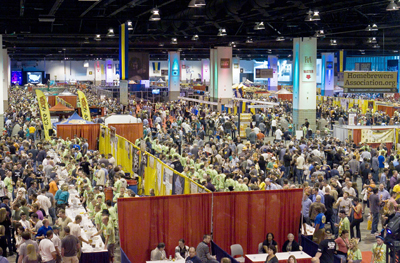A few years ago, Bill Manley, communication coordinator for Sierra Nevada Brewing Co., CA, was at the Great American Beer Festival “when this huge drunk guy saunters up to our booth and says, ‘Gimme your strongest beer.’ We pour him a Bigfoot, and he downs it like a shot. ‘Gimme another one,’ he says. We tell him that’ll be his last and hand him another. He downs that one the same way then slams the sample cup on the table. He turns and walks away, but not before he growls at us, ‘Your beer tastes like shit.’” Manley is laughing as he tells the story. But his sense of humor doesn’t change the fact that he would have liked to dump the beer over the guy’s head.

Coordinating the Great American Beer Festival requires the oversight of 495 breweries and 39,000 ticket holders.
Every brewery employee has festival stories like this. Stories of people who relentlessly beg for free schwag. People who complain about the size of their pour. People who want to be served before start time. People who want to be served after last call. People who hoard 62 coasters, 14 key-chain bottle openers and 78 stickers. People who are wasted.
Nobody wants to be that guy.
Fun is Hard Work
A beer festival, while fun for participants, is grueling work for brewery reps and the culmination of up to a year’s worth of effort for organizers. Most of them do it for love. But they also wish more attendees understood the labor that goes into getting that beer into the hands of festival-goers.
“I think the hardest thing for people to grasp is the enormity of it,” says Nancy Johnson, events director for the Brewers Association, which hosts three of the world’s best-known annual beer events—GABF, SAVOR and the Craft Brewer’s Conference (industry only).
In the GABF’s case, enormity means the coordination of three days, 495 breweries, 2,100 beers, 39,000 ticket holders, at least 17 hotels, four educational pavilions, 38 national locations where beer is dropped off for trucking to Colorado and $1.9 million spent. Oh, and 100 tons of ice.
“It’s a very large undertaking,” Johnson says, deadpan.
Though almost nothing can compare to the GABF in scope, organizers of even the smallest festivals observe similar protocol in the months before their events.









